A goal is a wish turned into action: advice on plotting #amwriting #writing #Writetip
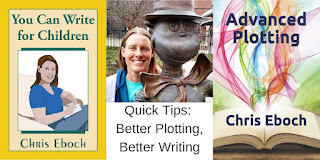
I often wind up discussing plot in terms of Goal – Motivation – Conflict.
Goal-Motivation-Conflict:
· What do they want to achieve? (Goal)
· Why is it important? (Motivation)
· Why is it difficult? (Conflict) It should bevery difficult (as appropriate for the age of characters and readers)!
The motivation determines the stakes. Stakes don’t need to be physical; good stakes may be the risk of losing friends, family, love, dignity, reputation, livelihood… but you need a penalty for failure! To keep the plot active and dramatic, make sure all three parts (Goal-Motivation-Conflict) are clear in every scene. The reader knows what the character wants, why it's important to them, and why it will be difficult to get.
And goals are not wishes.
A wish may be passive. “I hope this thing happens.” A goal is a wish turned into action. “I will do this thing to try to get this result.” I hope I will make new friends is a wish. I will do X in order to make new friends is a goal.
Remember, its Goal-Motivation-Conflict, not Wish-Motivation-Conflict.
I delve into this and much more in my online, self-paced Advanced Plotting course.
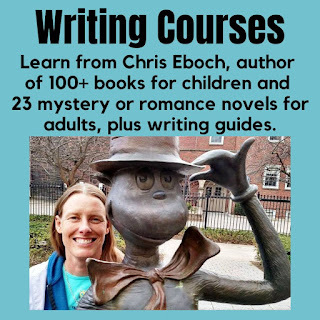 Advanced Plotting—Keep Those Pages Turning: Learn advanced techniques that will make a decent plot dynamic. Start with a “grab you by the throat” opening, pack the plot full, maximize your pacing, and use cliffhanger chapter endings to drive the story forward. Learn more here.
Advanced Plotting—Keep Those Pages Turning: Learn advanced techniques that will make a decent plot dynamic. Start with a “grab you by the throat” opening, pack the plot full, maximize your pacing, and use cliffhanger chapter endings to drive the story forward. Learn more here.You can also sign up for:
Educational Publishing: Make Money Writing for the Educational Market: Do you want to make money from writing? Are you willing and able to write on assignment if given a topic, word count, grade level, and deadline? Then you may be perfect for educational work for hire! Get it here.
You Can Write for Children: Learn about children’s publishing—opportunities and challenges, genres, age ranges, book and magazine markets, and resources to keep you going. Learn more here.
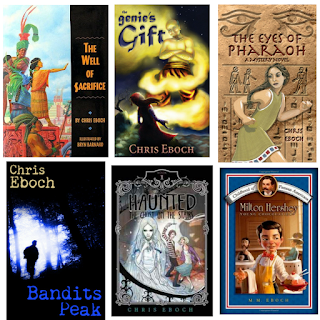 Chris Eboch is the author of over 100 books for children,including nonfiction and fiction, early reader through teen. Her novels forages nine and up include The Eyes ofPharaoh, a mystery in ancient Egypt; TheWell of Sacrifice, a Mayan adventure used in many schools; The Genie’s Gift, a middle easternfantasy; and the Felony Melanie series featuring the characters from the movieSweet Home Alabama as teenagers.
Chris Eboch is the author of over 100 books for children,including nonfiction and fiction, early reader through teen. Her novels forages nine and up include The Eyes ofPharaoh, a mystery in ancient Egypt; TheWell of Sacrifice, a Mayan adventure used in many schools; The Genie’s Gift, a middle easternfantasy; and the Felony Melanie series featuring the characters from the movieSweet Home Alabama as teenagers. Her writing craft books include You Can Write for Children: How to WriteGreat Stories, Articles, and Books for Kids and Teenagers, and Advanced Plotting. Learn more at chriseboch.com or her Amazon page.
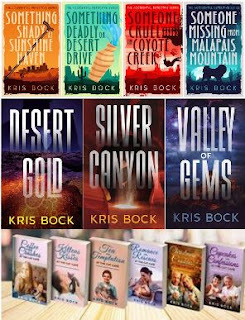 Chriswrites mystery, romance, and romantic suspense novels for adults as Kris Bock. Kris Bockwrites novels of mystery, suspense, and romance. In
theAccidental Detective series
, a witty journalist solves mysteries in Arizona and tackles thechallenges of turning fifty. Kris’s
Furrever Friends cat cafe sweet romanceseries.
features the employeesand customers at a cat café. In the
AccidentalBillionaire Cowboys series
, a Texas ranching family wins a fortune in the lottery, whichcauses as many problems as it solves.
Sign up for the Kris Bock Mystery and Romancenewsletter
and get a free Accidental Detectiveshort story and bonus material, a free 30-page sweet romance set in the world of the FurreverFriends cat café, and a printable copy of the recipes mentioned in the cat cafénovels.
Chriswrites mystery, romance, and romantic suspense novels for adults as Kris Bock. Kris Bockwrites novels of mystery, suspense, and romance. In
theAccidental Detective series
, a witty journalist solves mysteries in Arizona and tackles thechallenges of turning fifty. Kris’s
Furrever Friends cat cafe sweet romanceseries.
features the employeesand customers at a cat café. In the
AccidentalBillionaire Cowboys series
, a Texas ranching family wins a fortune in the lottery, whichcauses as many problems as it solves.
Sign up for the Kris Bock Mystery and Romancenewsletter
and get a free Accidental Detectiveshort story and bonus material, a free 30-page sweet romance set in the world of the FurreverFriends cat café, and a printable copy of the recipes mentioned in the cat cafénovels.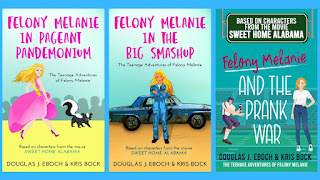 Krisalso writes a series with her brother, scriptwriter Douglas J Eboch, who wrotethe original screenplay for the movie Sweet Home Alabama. The FelonyMelanie series follows the crazy antics of Melanie, Jake, and their friends adecade before the events of the movie.
Sign up for the romanticcomedy newsletter
to get ashort story preview, or find the books at
Amazon US
or
All E-book retailers
.
Krisalso writes a series with her brother, scriptwriter Douglas J Eboch, who wrotethe original screenplay for the movie Sweet Home Alabama. The FelonyMelanie series follows the crazy antics of Melanie, Jake, and their friends adecade before the events of the movie.
Sign up for the romanticcomedy newsletter
to get ashort story preview, or find the books at
Amazon US
or
All E-book retailers
.



